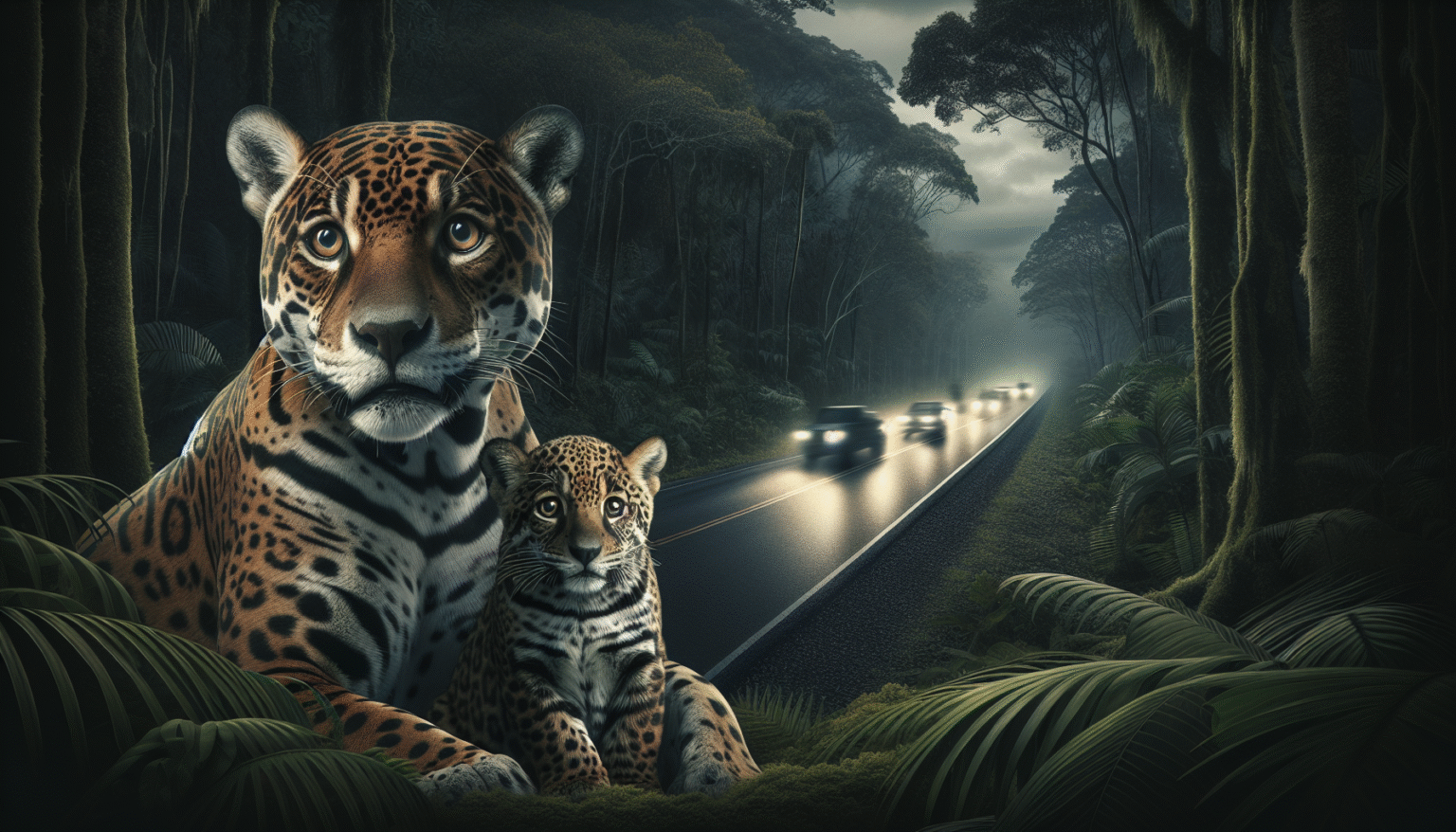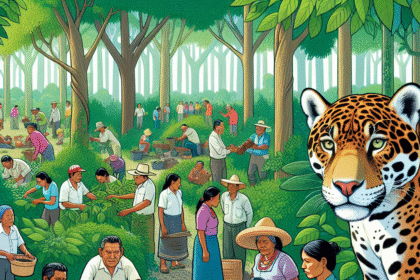Jaguars in Peril: The Truth Behind Road Accidents in Tulum
The Jaguar’s Importance in Ecosystems
Jaguars (Panthera onca), emblematic of the lush jungles and mildly tropical forests of Central and South America, hold a critical role within their ecosystems. As apex predators, they contribute to maintaining ecological balance by controlling prey populations such as deer and wild boar. This keystone species is a top influencer of biodiversity, ensuring that various other species flourish under their supervision.
In Tulum, Mexico, the plight of jaguars is an urgent issue. The serene coastal town, famous for its beautiful beaches and ancient ruins, is situated in a region with a rich biological heritage. Jaguars are intrinsic to the local culture, and their presence signifies an untouched wilderness. However, as Tulum experiences rapid infrastructural development and tourism growth, the jaguar’s habitat is increasingly under threat.
Rise in Road Construction and Its Impact
The rise of Tulum as a premier tourist destination has led to expansive road construction. The main roads connecting Tulum with nearby towns and popular tourist spots are expanding, creating more space for vehicles but fragmenting the jaguars’ habitats. Urban development often leads to a deterioration of the natural environment where these animals thrive.
According to studies, habitat fragmentation can double the risk of vehicle accidents involving wildlife. As roads slice through previously undisturbed ecosystems, they create barriers that disrupt the natural migration routes of jaguars. These barriers force the animals onto roads, dramatically increasing the likelihood of roadkill incidents.
The Statistics: Road Accidents and Wildlife
Research shows that in areas with increased vehicular traffic, wildlife accident rates can spike. In Tulum, reports have indicated a rising increase in road accidents involving jaguars. Many jaguars, particularly young males exploring new territories, venture onto roads rather than remaining within unsullied habitats. The dangers of traffic not only lead to fatalities for the jaguar population but also threaten their genetic diversity and long-term survival.
Notably, in the last three years, the number of documented roadkill incidents involving jaguars has shown an alarming upward trajectory. Conservationists estimate that at least 10 jaguar deaths occur each year due to vehicular collisions in this region.
Conservation Efforts and Community Awareness
Local government and environmental organizations are collaborating to develop strategies aimed at mitigating the ongoing threat to jaguars. Initiatives like wildlife corridors are being planned, designed to create safe passages for animals as they navigate fragmented landscapes.
Additionally, awareness campaigns are critical for educating the public on the importance of preventing roadkill. In Tulum, residents and tourists alike are encouraged to regulate speed limits in areas known for wildlife crossings. Roadside advocacy involves putting up warning signs that alert drivers to the presence of jaguars and other wildlife, reminding motorists to remain vigilant.
The Role of Local Tours and Ecotourism
Responsible ecotourism, a concept increasingly gaining traction in Tulum, aims to ensure that the presence of tourists does not impede wildlife conservation efforts. Responsible tours, which promote awareness of jaguar behavior and habitat needs, can significantly influence how visitors interact with the natural environment. When tourists are educated about the ecological importance of these big cats, they often become advocates for their protection.
Promoting eco-friendly transportation options that minimize road usage while allowing for immersive wildlife experiences is vital. Nature walks, guided hikes, and bike tours offer alternatives for observing the stunning biodiversity of the Tulum region without further endangering the local fauna.
Community Involvement and Sustainable Practices
Engaging the local community in conservation efforts is also paramount to the survival of the jaguar population. By supporting initiatives that protect natural habitats while promoting sustainable economic opportunities, residents can become stewards of their environment. Efforts such as workshops on conservation practices, wildlife monitoring programs, and community-based tourism can facilitate active participation in wildlife preservation.
Local farmers can be educated on sustainable agricultural techniques that minimize land conversion, preserving critical habitats. When communities understand that protecting jaguars can have a cascading effect on local ecosystems and tourism, they are more likely to engage in conservation efforts.
Role of Technology in Conservation
Innovative technologies are making strides in protecting wildlife. Motion-sensor cameras and drones have become pivotal in monitoring jaguar movements and assessing roadkill incidences. By collecting data on their natural behaviors, researchers can better devise strategies that protect them from vehicle collisions.
Moreover, smart signage technology offers an avenue for advancing road safety. Dynamic signs equipped with sensors can alert drivers to wildlife crossing areas in real-time, decreasing vehicular speeds when animals are present.
Policy and Legislation
Effective governance plays a key role in conservation initiatives. Policies must be enforced that prioritize the protection of wildlife corridors and restrict destructive development practices. Implementing land-use regulations that favor the preservation of natural habitats over unchecked expansion is essential.
Community representatives should be included in decision-making processes regarding road construction and urban planning, ensuring that the presence and welfare of local wildlife are considered.
The Broader Picture of Biodiversity
Tulum’s jaguar population’s survival is intertwined with the broader narrative of biodiversity conservation. By ensuring the protection of this apex predator, we can safeguard countless other species dependent on the same habitats. This approach bolsters the entire ecosystem and reaffirms the need for a collective commitment toward sustainable development.
Adopting a holistic view of the interconnectedness of species within ecosystems helps highlight that the fight to protect jaguars is equally about ensuring the survival of the wider natural environment.
Final Thoughts
The challenges facing jaguars in Tulum serve as a microcosm of the broader issues impacting wildlife globally. As conflict between human development and wildlife habitats intensifies, the need for committed action becomes increasingly clear. It is essential to foster awareness, integrate technology, and enact stringent policies to secure a future where both jaguars and humans can thrive. The road ahead requires collaboration among community members, tourists, and policymakers to ensure that these magnificent creatures continue to inhabit the regions they have thrived in for centuries.







